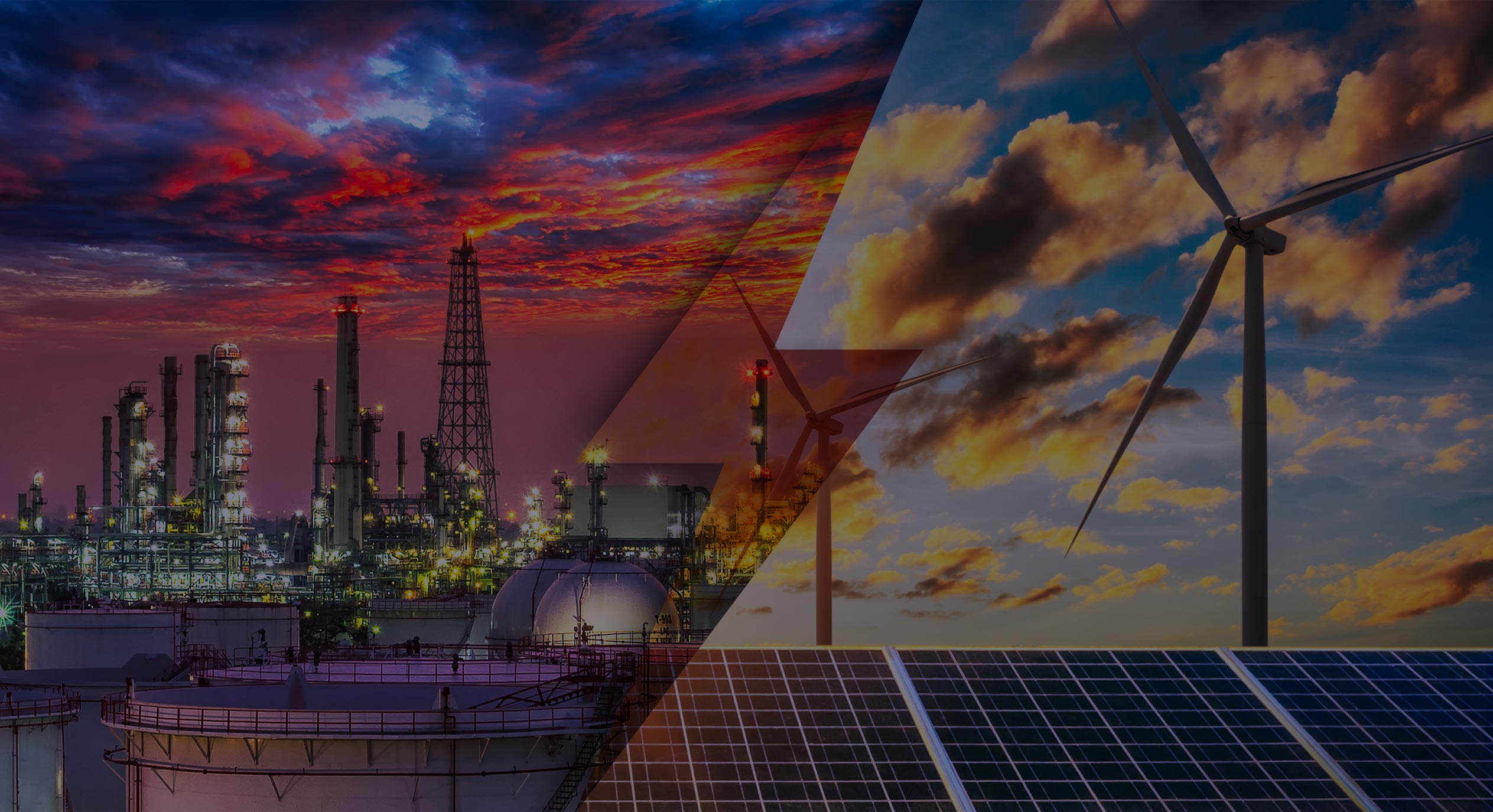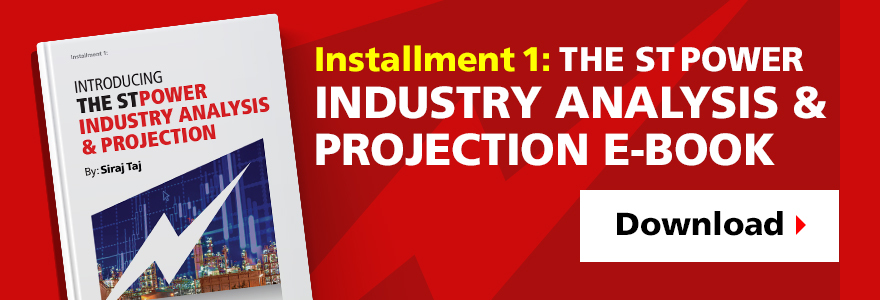Solutions such as Distributed Energy Resources (DER) can help navigate this critical power generation industry transformation.
The U. S. Electric Power market is fundamentally transforming at several fronts, most notably with the real-time shift of renewable energy sources (RES) and conventional power systems (CPS). Consequently, 2019 is quite likely to reshape the U.S. power sector for years to come.
Renewables are dominating the new build generation, with RES supplying energy at costs less than or equal to CPS. The upshot of the approaching grid parity is that traditional utility business models must adapt and change.
This conversation took the spotlight at Power-Gen International 2018, where we joined our industry-expert peers this past December to discuss new technologies and share expertise in preparation for power market transformation
Here are just a few of the emerging dynamics that underscore the transformation that the power sector is undergoing:
- Coal-fired generation has become uneconomical and is facing early retirement due to the historically low price of natural gas. Energy Information Administration (EIA) expects Henry Hub gas prices to average $3.11/mmBtu in 2019, down six cents from the 2018. According to EIA, natural gas supplied more than 38% of power generation in 2018, while coal supplied less than 27%.
- The declining costs of renewables and historically low gas prices are now setting the marginal cost of electricity. Meanwhile, the traditional vertically-integrated Utility business model is now shifting toward a performance-based model. Power-generating assets that could produce reliable, sustainable, clean, and competitive energy will be rewarded.
- The influx of renewable energy sources is fundamentally changing how energy is generated and distributed. Distributed Energy Resources (DER) – Solar generation, Energy storage, EV chargers, Micro-grid, and so on — are revolutionizing the power systems. DER pose a real and growing threat to traditional grid infrastructure, prompting Utilities to initiate regulatory discussions about Grid modernization, DER compensation, customer adoption models, and host of other relevant issues.
Clearly, the transformation is moving forward at full speed with economies of scale and advancement in renewable technologies. Meanwhile, the Power industry is forced to resolve critical parts of market structure for full and complete transformation. So, what must be done during the transition period to supply reliable, sustainable, flexible, and profitable energy to meet the growing demand?
Integrating RES with CPS promises to be a viable and cost-effective solution to supply reliable, sustainable, and flexible energy to meet today’s demand. The integration mandates that gas plants with matured technologies be kept competitive and profitable to provide critical support for maintaining the Power system stability during the transition period.
The Challenges of Integrating RES and CPS
The U.S. electricity market is set for significant disruption across the entire value-chain, which includes the impacts of the following events and developments:
- The shuttering of coal plants for economic reasons, which make sense, but that creates system reliability shortfall. The incremental cost to remedy the shortfall is not yet estimated because commercially viable solutions are not yet identified.
- Gas-fired generation has been called a bridge to a renewable future, but the length of the bridge depends on where it is.
- Federal bailout of large uneconomic generators, including nuclear and coal, is unfavorable across most utilities according to Utility Dive’s 2018 sector survey. That means that traditional capacity will continue to come offline, creating growth for new build renewable generation.
- DER are upending the economics of the power grid
- The Federal Energy Regulatory Commission’s (FERC) focus on power grid resiliency, wholesale pricing, and fuel security.
- States are dissatisfied with the outcomes of deregulated markets and are enacting subsidies and mandates to help determine the generation mix within their borders. More than 90 U.S. cities and towns have committed to sourcing their electricity 100% from renewables.
- U. S. utilities have yet to outline a clear strategy to adopt DER in their business model.
Potential Solutions for Integrating RES and CPS
Integrating renewables with conventional systems promises to be a viable and cost-effective solution to remedy system reliability shortfalls, grid resiliency, and help produce reliable, sustainable, clean, and competitive energy to meet growing demand.
While we outlined some of the challenges to integrating RES with existing CPS above, there are also many potential solutions help fuel this critical energy sector transformation. Here are some trends and approaches to keep an eye on…
-
Gas generation’s continued domination
Natural gas is the new dominant fuel in the U.S. power sector largely due to historically low natural gas prices. Gas-fired generation has been called a bridge to a renewable future, but again, the length of the bridge depends on the location. Integrating energy storage with new and existing gas plants can dramatically improve reliability, flexibility, and stability of the overall power system. The integration of energy storage allows gas generators to be turned down immediately, without impacting reliability, as well as enabling them to operate at optimal efficiency.
For example, a hybrid solution has been applied to two existing GE LM6000 peaker units at Southern California Edison’s (SCE) Norwalk site and Rancho Cucamonga site using Hybrid Electric Gas turbines (EGT®) developed by Wellhead Electric and General Electric. The advantages of such solutions include:
- Reliable stand-alone energy storage without burning gas
- Immediate production power during grid emergencies. Over time, the modular energy storage capacity can be augmented, optimizing existing grid interconnection capacity to eventually use the underlying gas generator as an emergency backup resource.
-
The growth of DER
The cost of renewable energy generation, particularly solar technology, has been steadily decreasing. Solar generation is becoming a very popular solution for residential customers, who are purchasing simple rooftop installations. Commercial and Industrial customers are considering solar generation as part of a DER) that consists of:
- Solar generation
- Energy storage
- Micro-Grid
- EV charging stations
These emerging resources offer technically and commercially viable solutions to remedy the challenges of supplying reliable, flexible, and sustainable energy. Since solar power is generated when the sun is shining, during that period it usually generates more capacity than there is actual demand. Therefore, large batteries — i.e., Lithium ION — are utilized to store excess energy for later use when the sun is not shining. A micro-grid is designed to reduce the burden on outdated and weak transmission and distribution systems by distributing renewable energy directly to its consumers, mainly in the commercial and industrial sectors.
DERs such as customer-sited solar, batteries, and electric vehicle chargers are set to transform the U. S. power system where customers will have greater control of their electricity usage and potentially replace some traditional grid infrastructure.
-
Grid modernization and performance-based utility metrics
Along with clean energy policy, the majority of states have taken regulatory and legislative actions on broad grid modernization to adopt emerging resources. Energy analysts believe that states must consider a comprehensive strategy for integrating new performance-based metrics into utility revenue models, such as standards for energy efficiency, customer engagement, sustainability, and so on to create hybrid revenue models, which would generate part of the revenue from traditional cost-of-service investments and the rest from newer performance-based metrics.
Utilities are using emerging software tools including LoadSEER to forecast load growth, and financial and operational impacts of the new resources. Comprehensive capacity analysis requires adequate planning for the amount, location, and timing of DER over a period of several years. This type of capacity analysis is no longer possible by standard power flow modeling software used by Utilities.
Meanwhile, software tools such as WattPlan Grid estimate the propensity for DER adoption for each customer based on economic and demographic data. Customers make decisions independently so utilities need to understand how their customer decisions would impact the power grid.
ST Power Services is an expert at overcoming RES and CPS integration challenges. We have been actively working with clients including Hyperloop Transportation Technologies to develop and implement DER utilizing solar technologies. We’re also working with large combined cycle power plants with matured technologies to optimize their overall asset performance to provide competitive and profitable support to maintain power system stability.
ST Power Services Consultants have more than 70 years’ experience in power generation industry. Our in-depth knowledge of evolving energy market and pragmatic approach to asset optimization enable us to provide exceptional value to Power Plant Owners.


